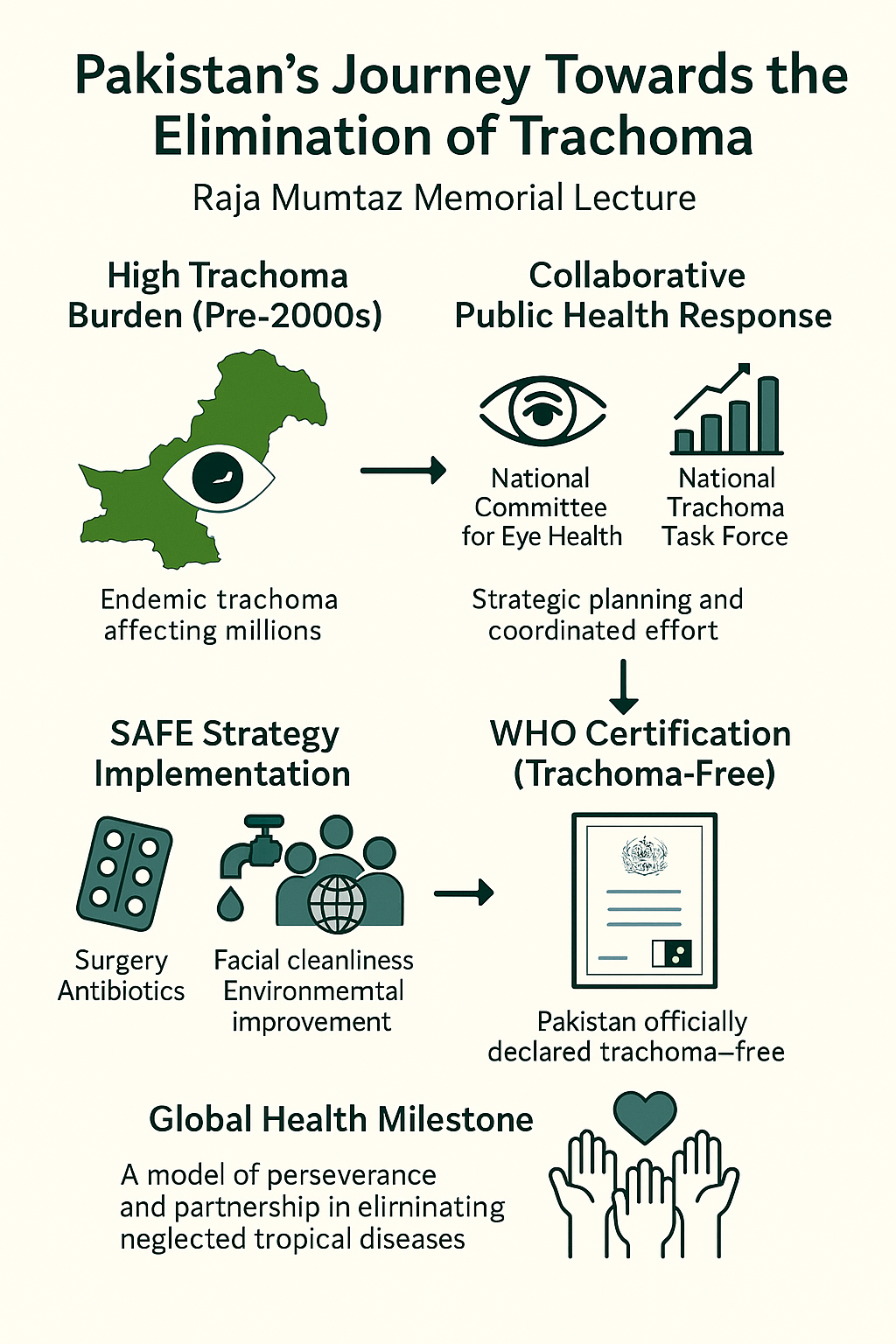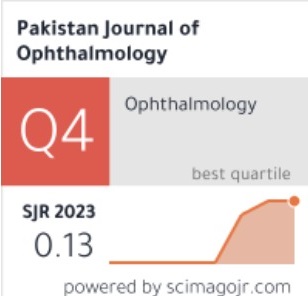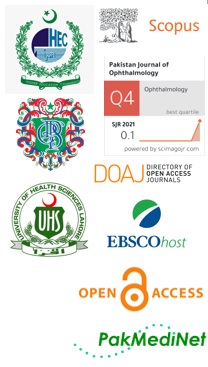Pakistan’s Journey towards the Elimination of Trachoma (Raja Mumtaz Memorial Lecture)
Doi: 10.36351/pjo.v41i3.2123
DOI:
https://doi.org/10.36351/pjo.v41i3.2123Keywords:
Pakistan, Trachoma, AzithromycinAbstract
Pakistan’s journey towards the elimination of trachoma is a remarkable example of collaborative effort, perseverance, and strategic planning in public health. The efforts began with groundbreaking impact of Hugh Taylor’s 1980 report.1 The report estimated that the prevalence of blindness in Pakistan was around 2%, with cataract identified as the most common cause. It also highlighted a gross mismatch in human resources, noting that 45 out of 64 districts were without an ophthalmologist. Moreover, it emphasized the urban-rural imbalance, pointing out that most ophthalmologists were based in urban areas, while the burden of blindness was concentrated in rural communities. That report served as a wake-up call for Pakistan’s government, leading to major reforms in the country’s eye care delivery system.

Downloads
Published
How to Cite
Issue
Section
License
Copyright (c) 2025 Asad Aslam Khan

This work is licensed under a Creative Commons Attribution-NonCommercial 4.0 International License.






